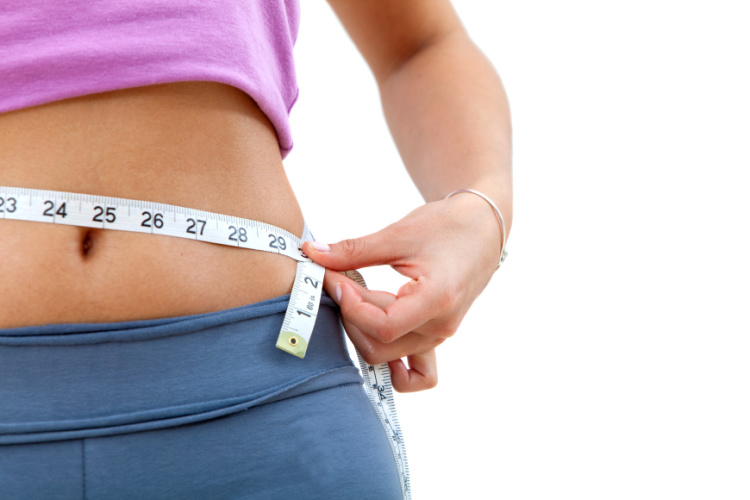Alternative Ways to Track Weight Loss
Jun 26, 2023

When you embark on a weight loss journey, you may find yourself focusing solely on one thing: the scale.
It’s easy to get hung up on that number and feel frustrated when it doesn’t budge, no matter how hard you try. While the pounds do play a part, they don’t tell the complete story, not by a long shot.
Let's explore why scales don’t give the full picture and additional ways to track your progress for a more comprehensive understanding of just how far you’ve come.
The Limitations of Scales
Scales are a good starting point for determining your progress. The number on the scale provides your body’s mass (in pounds), which includes fat, muscle, bone density, organs, and even the food you ate that day. Body mass index (BMI) is an important indicator of your general health level — whether you’re underweight, average weight, overweight or obese. However, BMI does have shortcomings, as it doesn’t differentiate between muscle and fat. For example, bodybuilders typically have very low body fat and high muscle mass but may have a BMI that ranks them overweight or obese.
Another problem with scales is that we often get emotionally tied to the number. When it goes down, we feel happy. But when it goes up, we can feel depressed, and it can hurt our body image — even if we are well on the way to getting healthier.
A Deeper Dive into Why Your Weight Fluctuates
As mentioned above, the number on the scale includes your body’s entire mass. There are several factors involved:
Food & Water
Did you just eat a large meal? Did you drink several glasses of water? If you hop on the scale right after, the number will include that weight. That doesn’t necessarily mean your fat percentage has increased, but rather that you haven’t given your body enough time to digest the food or water. Water is an especially significant factor for women, who tend to retain it during or just before their menstrual cycles.
Muscle
You’ve probably heard that “muscle weighs more than fat.” And that’s sort of true, although a better way to look at it is that muscle is denser than fat. It also takes up less space than fat, meaning that the number on the scale could fluctuate, especially if part of your weight loss program includes exercise.*
Alternative Ways to Track Weight Loss Progress
Weigh-Ins
Although the scale does have the limitations outlined above, it is definitely a helpful way to track weight loss.* Get the most out of it by leveraging the following tips:
Weigh in monthly instead of weekly: This gives your body more time to respond to fluctuations due to gaining muscle and the time it takes to digest food.
Weigh in first thing in the morning: This eliminates a higher number due to eating or drinking throughout the day.
Keep an open mind: The number isn’t all-encompassing. Even if it’s stable or goes up, that doesn’t mean you’re not making progress, as it could be related to gaining muscle mass.
Take Body Measurements
Body measurements are an excellent indicator of progress because they show the specific areas of your body that have lost fat. On the same monthly day you weigh in, grab a soft tape measurer and wrap them around the largest part of each of the following:
- Waist: The area ½ inch above your belly button
- Hips: The biggest part of your hips
- Bust: The area around the chest, right at the nipple line
- Chest: The area just underneath your bust
- Thighs: The largest part of your leg
- Calves: The lower leg
- Upper Arm: The largest part of the arm, just above the elbow
- Forearm: The part of the arm just below the elbow
Be sure to jot down the numbers each time and keep track of how they change.
Note How Your Clothes Fit
Make mental notes of how tight your clothes feel on you each day. Are they getting looser? You can even take photos of yourself in the same outfit each month to see how it looks — you’ll likely notice changes each time you look back.
At some point, you may have to purchase a smaller size, too — talk about an exciting moment!
It may be one of the simplest ways to track weight loss, but how your clothes fit genuinely is one of the best weight loss indicators!
Be Patient
Ultimately, losing weight and gaining health takes time and commitment. Results take time, but you’ll get there.
Be patient and consistent, and take one small step at a time. You’ll likely start to notice you have more energy, better numbers at the doctor’s office, and generally feel better.
What’s your weight loss tracking program? Share in the comments below!
------------------------------------------------------------------------------------
Author: Caitlin H
Diet-to-Go Community Manager
Caitlin is the Diet-to-Go community manager and an avid runner. She is passionate about engaging with others online and maintaining a healthy, active lifestyle. She believes moderation is key, and people will have the most weight loss success if they engage in common-sense healthy eating and fitness.










